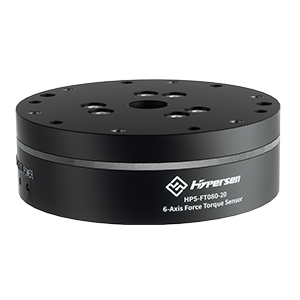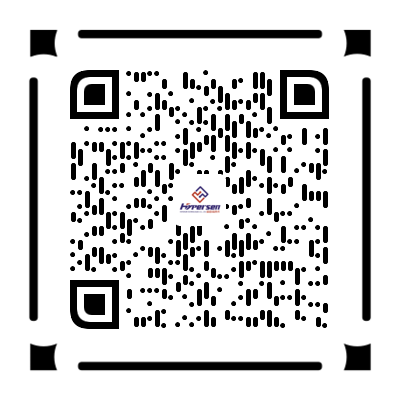I. Classification of LiDAR by Function
- Laser Distance Measuring LiDAR
Laser distance measuring LiDAR works by emitting a laser beam to the target object and receiving the reflected laser signal. By recording the time difference, it determines the distance between the object and the measurement point. Traditionally, LiDAR has been used in industrial safety detection, such as the “laser walls” often seen in sci-fi movies. When someone crosses the laser, the system immediately reacts with an alert. Laser distance measuring LiDAR is also widely used in space mapping. With the rise of artificial intelligence, it has become an essential core component in robotics. Paired with SLAM technology, it enables robots to perform real-time localization and navigation, achieving autonomous movement.
- Laser Speed Measuring LiDAR
Laser speed measuring LiDAR measures the speed of a moving object by taking two laser distance measurements at specific time intervals.
There are two main methods for laser radar speed measurement. One is based on the laser distance measuring principle, where the system continuously measures the distance to the target at fixed intervals. The difference in the distance over time gives the speed, and the direction of speed is determined by the sign of the distance change. This method is simple but has limited accuracy, and it is only suitable for targets with strong laser reflection.
The other method uses Doppler shift. Doppler shift refers to the frequency difference between the emitted and received signals when there is relative motion between the target and the LiDAR.
- Laser Imaging LiDAR
Laser imaging LiDAR is used for target detection and tracking, providing information about the target’s position and speed. It can perform tasks that traditional radar cannot, such as detecting submarines, mines, and hidden military targets. It is widely used in military, aerospace, industrial, and medical fields.
- Atmospheric Detection LiDAR
Atmospheric detection LiDAR is mainly used to detect molecules, smoke density, temperature, wind speed, wind direction, and the concentration of water vapor in the atmosphere. It helps monitor the environment and predict severe weather events such as storms and sandstorms.
- Tracking Radar
Tracking radar can continuously track a target and measure its coordinates, providing its motion trajectory. It is used in artillery control, missile guidance, ballistic measurement, satellite tracking, and research in breakthrough technology. It is also increasingly applied in meteorology, traffic, and scientific research.
II. Classification of LiDAR by Working Medium
- Solid-State LiDAR
Solid-state LiDAR has high peak power, and its output wavelength range matches existing optical components. It is highly efficient, compact, lightweight, reliable, and stable, which makes it ideal for airborne and spaceborne systems. Recently, the focus in LiDAR development has been on diode-pumped solid-state LiDAR.
- Gas LiDAR
Gas LiDAR, represented by CO2 lasers, operates in the infrared band, with low atmospheric attenuation and long detection ranges. It has played an important role in atmospheric wind fields and environmental monitoring. However, it has large size, and the infrared HgCdTe detectors must operate at 77K, limiting its development.
- Semiconductor LiDAR
Semiconductor LiDAR can work with high repetition frequency, has a long lifespan, small size, low cost, and is less harmful to human eyes. It is widely used in Mie scattering measurements with strong backward scattered signals, such as cloud base height detection. The potential applications of semiconductor LiDAR include visibility measurements, aerosol extinction profiling in the atmosphere, and rain/snow identification.
III. Classification of LiDAR by Line Number
- Single-Line LiDAR
Single-line LiDAR is primarily used for obstacle avoidance. It has a fast scanning speed, strong resolution, and high reliability. Compared to multi-line and 3D LiDARs, it reacts faster in angular frequency and sensitivity. However, it can only scan in a plane and cannot measure the height of objects, which limits its application. It is commonly used in service robots, like the popular robot vacuum cleaners.
- Multi-Line LiDAR
Multi-line LiDAR is mainly used for radar imaging in automotive applications. It improves on single-line LiDAR by adding dimensions and creating better scene reconstructions, allowing for the detection of object heights. Multi-line LiDARs typically have configurations like 4, 8, 16, 32, and 64 lines. However, it is expensive, which limits its widespread adoption.
- Matrix LiDAR
IV. Classification of LiDAR by Scanning Method
- MEMS LiDAR
MEMS LiDAR can dynamically adjust its scanning mode to focus on specific objects and capture finer details, which traditional mechanical LiDARs cannot do. The system only requires a small mirror to direct the fixed laser beam to different directions. Due to its small mirror size, the inertia moment is low, allowing for quick movement, enabling a 2D scanning mode.
- Flash LiDAR
Flash LiDAR can rapidly capture the entire scene, avoiding the issues caused by target or LiDAR movement during scanning. It works similarly to a camera, where the laser beam spreads in all directions, illuminating the entire scene with a single flash. Afterward, the system uses a micro-sensor array to capture the reflected beams. Flash LiDAR has its advantages but also some drawbacks. The larger the pixel size, the more signals it has to process, which may introduce interference and reduce accuracy.
- Phased-Array LiDAR
Phased-array LiDAR uses a row of emitters that adjust the relative phase of signals to change the direction of the laser beam. Currently, most phased-array LiDAR systems are still in the laboratory, while rotating or MEMS-based LiDARs are more commonly used.
- Mechanical Rotating LiDAR
Mechanical rotating LiDAR is one of the earliest developed LiDARs. While the technology is mature, the system is complex, and its core components are expensive. These include the laser, scanner, optical components, photodetectors, ICs, and navigation devices. Due to high hardware costs, mass production is difficult, and stability needs improvement. Solid-state LiDAR has become the focus of many companies.
V. Classification of LiDAR by Detection Method
- Direct Detection LiDAR
Direct detection LiDAR’s structure is similar to a laser distance meter. It works by emitting a signal, and after the target reflects it, the receiver collects the signal. The distance is determined by measuring the time taken for the laser to return. Radial velocity can be determined by the Doppler shift of the reflected light or by measuring multiple distances and calculating their rate of change.
- Coherent Detection LiDAR
Coherent detection LiDAR comes in single-stable and double-stable configurations. In the single-stable system, the transmitting and receiving signals share an optical aperture and are isolated by a transmit-receive switch. The double-stable system uses separate optical apertures for transmitting and receiving signals, eliminating the need for a switch.
VI. Classification of LiDAR by Laser Emission Waveform
- Continuous LiDAR
Continuous LiDAR emits continuous light, similar to a flashlight that stays on. It collects data from a single point at a specific height, but due to wind data variability, this method can be somewhat simplistic. Some manufacturers use a 360-degree rotation to collect multiple points in a virtual plane and average the data.
- Pulsed LiDAR
Pulsed LiDAR emits laser light in pulses. The principle is to send thousands of laser particles and use the Doppler effect to evaluate wind conditions at different heights. Pulsed LiDAR collects more points than continuous LiDAR and is more accurate in reflecting the wind conditions at specific heights.
VII. Classification of LiDAR by Platform
- Airborne LiDAR
Airborne LiDAR integrates laser ranging equipment, GNSS, and INS systems, using an aircraft platform to scan the ground. It records information such as the target’s attitude, position, and reflectivity to obtain 3D surface data. It has broad potential in both military and civilian applications. However, its detection range is limited to about 20 kilometers, and atmospheric conditions like fog and rain can significantly reduce its effectiveness.
- Vehicle-mounted LiDAR
Vehicle-mounted LiDAR, also known as 3D LiDAR scanning, uses laser beams to analyze the distance between the vehicle and the target objects. It creates 3D point clouds and maps of the environment for perception purposes. It plays a critical role in the development of autonomous vehicles, with companies like Google, Baidu, and BMW using it in their self-driving systems.
- Ground-Based LiDAR
Ground-based LiDAR is used to obtain 3D point cloud data from forested areas, allowing for tree height and individual tree location extraction. It saves manpower and resources while improving accuracy.
- Spaceborne LiDAR
Spaceborne LiDAR operates from satellite platforms with a wide field of view, allowing it to reach virtually any part of the Earth. It is crucial for acquiring 3D control points and digital ground models. Spaceborne LiDAR is also used for measuring the vertical distribution of vegetation, sea surface height, cloud layers, and special climatic phenomena.












